When we think about ladybugs, we often envision the bright red beetle with the black spots. Yet, many ladybird species don’t have spots. Some are spotless, while others have stripes or waves.
Contents
Do all ladybugs have spots?
There are around 5,000 different species of ladybugs across the globe. Arguably the most famous of these is the seven-spot ladybugs, with its red wing-casing and three red spots on each wing, and one in the centre. Though there are many species of ladybugs that follow this pattern, there are also many that do not have spots at all. Here are a few examples of spotless ladybugs.
| Ladybug Species | Appearance |
|---|---|
| Cream-Spot Ladybug | Cream-colored with no spots or markings |
| Pink-Spotted Ladybug | Pale pink with no spots or markings |
| Black Ladybug | Solid black color with no spots or markings |
| Orange Ladybug | Bright orange with no spots or markings |
| Yellow Ladybug | Vibrant yellow with no spots or markings |
The blood-red ladybug beetle (Cycloneda Sanguinea), the polished lady beetle (Cycloneda munda), and the California lady beetle (Coccinella californica)
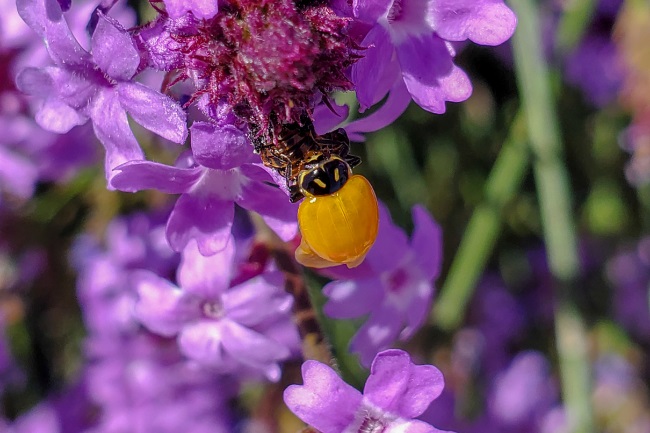
Of all the spotless ladybugs, these are the ones that most resemble a seven-spot ladybug that has simply lost its spots. Though very similar to look at, they are mostly easy to divide up by where they are found. While the California lady beetle is helpful restricted to this state, the polished lady beetle is located on the eastern side of the United States. The blood-red ladybug beetle is common in Latin America and the southern United States. Identification can be tricky with such similar-looking beetles; however, the California beetle also has a distinctive black line down the centre of its elytra. The blood-red ladybug has white markings that are variable depending on the sex. All three feed on aphids.
The blue-steel ladybug (Cycloneda munda)
There’s something appealing about the idea of a blue ladybug, but if you saw the blue-steel ladybug, it’s unlikely you would immediately think it was a ladybug at all. If futuristic ladybug aliens beamed down from space, this is what we could expect them to look like. This small round beetle is wonderfully iridescent, with a metallic sheen that makes it look like a tiny piece of jewelry. Native to Australia, it was brought over to New Zealand to help manage certain pest species.
The Fungus-eating ladybug (Illeis galbula)
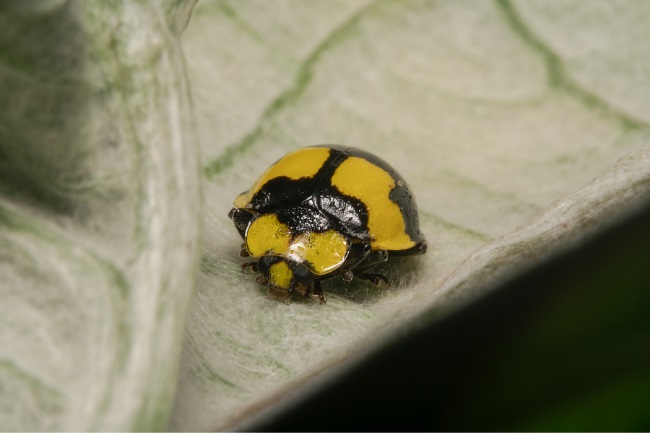
As the name suggests, this Australian ladybug does not feed on aphids and other insects as most ladybugs do. Instead, it is specialised to feed on mildew, both in its larval stage and as an adult. A wonderful yellow beetle with zigzag stripes of black across its elytra, it resembles more closely some ground beetle species rather than the famous ladybugs we all know and love.
Three banded ladybug (Coccinella trifasciata)
Viewing this ladybug for the first time, you can’t help but think they missed a trick in not calling it the tiger ladybug. With a red base and two paired, and one joined, black stripes across its back, their edges outlined in cream, it is a very striking and attractive beetle. It has a wide distribution, being found across North America, Europe, and Asia. It feeds on aphids, and males and females can easily be told apart by the amount of white present on their heads.
The striped ladybug (Myzia oblongoguttata)
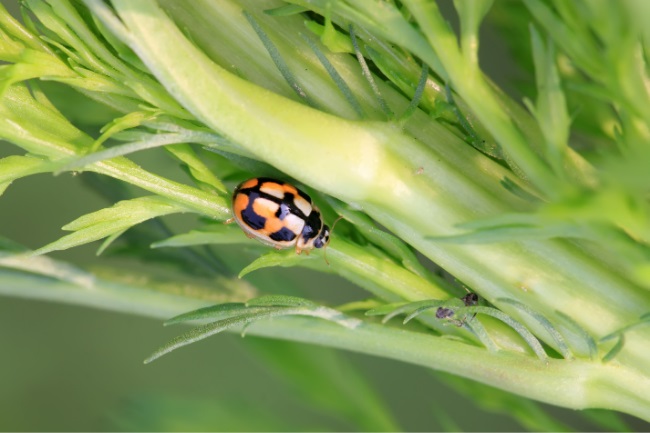
Unlike the types of ladybugs popular in drawings and photographs, this tiny brown ladybug might seem slightly dull. Yet its caramel colourings, beige stripes, and patches give it an attractive air. We often think of ladybugs as spending their time in grasslands or sitting attractively on flowerheads, but this species is more specialised to spending its time in pine and birch trees, as well as wandering around the northern tundra.
Three-striped lady beetle (Brumoides suturalis)
A stunning ladybug, the three-striped lady beetle, is mainly found in India. It has three thick dark stripes, going from the head to the tail (figuratively speaking) of the beetle, with paler, more creamy lines in between. Above its elytra, it is a soft light brown colour. Its stripes also have a slightly metallic sheen.
Transverse ladybug (Coccinella transversalis)

This wonderful ladybug looks rather like someone has had a go at a dot-to-dot on a seven-spot ladybug. With red elytra and several bird-like waves on each wing, it’s undoubtedly eye-catching to look at. Other markings include small red or oranges patches on its head and pronotum (the area immediately behind the head) and a black strip down the centre of the elytra. It is found from India across Eastern Asia to Australia. It eats a number of different aphid species, including the pea aphid and the cotton aphid.
Tortoise-shelled ladybug (Harmonia testudinaria)
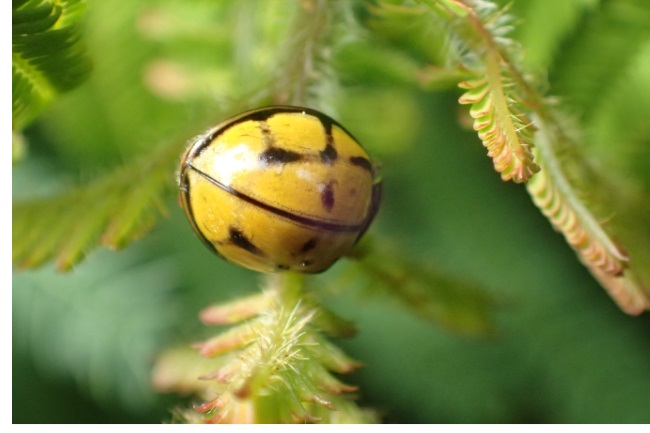
There is something comical about exchanging the patterning you associate with one animal onto another’s form, such as putting tiger-stripes on a giraffe. It’s therefore always exciting when nature does it for you. The tortoise-shelled ladybug is very distinctive, with horizontal and vertical lines marking out a series of boxes on its back; however, these can vary in intensity. It is mostly found on the east coast of Australia, New Guinea, and Indonesia.
Mealybug ladybug (Cryptolaemus montrouzieri)
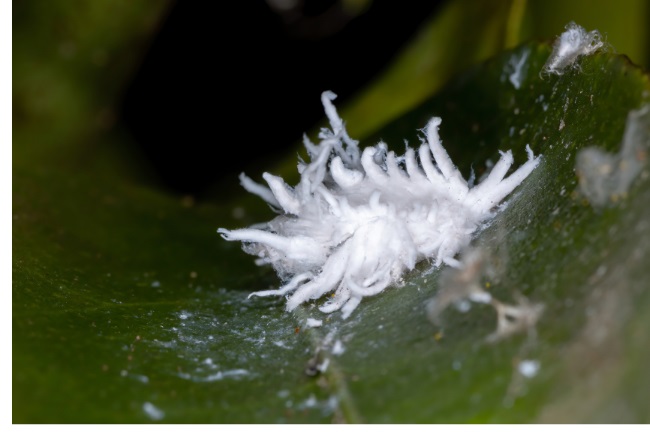
Although commonly known as the mealybug ladybird, another name for this species is the mealybug destroyer, which sounds much more dramatic than this tiny insect looks. It isn’t as eye-catching as many of its friends with dark bluey-brown elytra and a pale brown body. Its body is also covered in many tiny hairs, making it look particularly fuzzy. Add that to the large black eyes, and it seems positively like something out of an animated children’s film. Endemic to Australia, it has since been spread to Europe and New Zealand amongst other countries. As its name suggests, mealybugs are its favourite food, though it will branch out to other insects.
Why do some ladybugs have spots?
A ladybug’s red wings with its black spots are a classic example of aposematic colouration. This is essentially the opposite of camouflage, where the colour or patterning of an animal aims to keep itself out of sight or hidden. Instead, these creatures are trying to be seen, most notably by anything that might want to eat them. The red is a warning colour, telling those potential enemies that they will come to harm if they try to take on this tiny beetle. It stands out sharply against the green vegetation they are likely to be spending most of their time on. Additionally, combining this basal colour with a strongly contrasting tone helps ensure visibility in changing light conditions. Other famous examples are things like wasps or the monarch butterfly. Many mimics try and get the protection of warning colours without having the goods to back it up, such as wasp-coloured hoverflies. Even ladybugs have their own mimics, such as the aptly named ladybug mimic spider.
Do a ladybug’s spots fade?
When a ladybug emerges from its pupa into its adult form for the first time, its spots aren’t immediately present. As their exoskeleton hardens, the spots then slowly fade into place. Researchers have also found that the brightness and strength of a ladybug’s markings as an adult are partly down to how good a diet it had as it was growing up. This is something we find in many animals; that their diet will affect how good they look, and it can be a critical determining factor as to whether they’ll be popular with the opposite sex. If strong markings show how well you ate, they’ll probably also tell someone how healthy or strong you are.
As the ladybug ages, their spots and colours will fade slightly. This is common with many insects. If you find a butterfly towards the beginning of the season when it’s just emerged and see one at the end of its life, the colour difference will be pronounced. The same is true with bumblebees, which can become paler and drabber as time goes on. The ladybug won’t lose its spots entirely, though; they will simply be a little bit paler.
While the famous seven-spot may remain our most distinctive and renowned ladybug, it’s good to remember that it’s not the spots that make a ladybug great but the role they play within our ecosystems. With or without spots, ladybugs have busy little lives, both as predator and prey, and it’s certainly exciting that there are so many more which we can take the time to get acquainted with.

